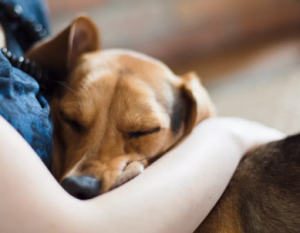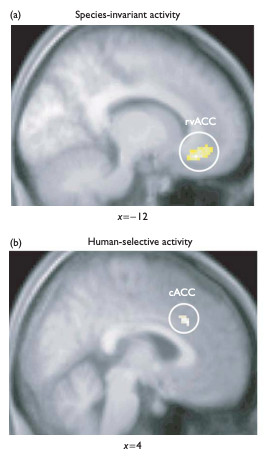
Image Credit: Laura Stolfi – Stocksy United
Dogs aren’t a man’s best friend for nothing. Our closest animal friend provides companionship, loyalty and warmth like no other. The convergent evolution of humans and dogs have made it possible for dogs to use human communicative behaviours, such as gazing, to bond with their owners.
So how do these bonds develop?
 Puppy eyes! To be more exact, “mutual gaze” between a pet and their owner increases the bond between the two. Mutual gaze falls under a type of nonverbal communication used by humans to interact. Gazing can help understand another person’s intention and establish a social attachment between each other. It is the most fundamental method of communication shared between a mother and baby because of its positive association with oxytocin. This love hormone is produced in the brain to regulate social interactions and sexual reproduction. For example, oxytocin is released when we hug or kiss, or during childbirth and breastfeeding.
Puppy eyes! To be more exact, “mutual gaze” between a pet and their owner increases the bond between the two. Mutual gaze falls under a type of nonverbal communication used by humans to interact. Gazing can help understand another person’s intention and establish a social attachment between each other. It is the most fundamental method of communication shared between a mother and baby because of its positive association with oxytocin. This love hormone is produced in the brain to regulate social interactions and sexual reproduction. For example, oxytocin is released when we hug or kiss, or during childbirth and breastfeeding.
How does Oxytocin work?
Oxytocin plays a crucial role in bonding between our loved ones. A MRI scan (Figure 1) from a study shows that the recognition of a human and canine species can stimulate a specific part of the brain that’s strongly acted upon by oxytocin for the pet and its owner. Once stimulated, oxytocin is released from the brain, and enters the bloodstream to excite the cells in our body. This hormone runs in a positive loop mechanism. For instance, when a mother cares for a baby, there is an increase in oxytocin in the infant, which enhances attachment between the two. This stimulates oxytocin release in the mother to encourage further maternal behaviour.

Figure 1 – (a) shows the brain activity of a canine companion and (b) shows the owner’s brain activity. Both images show that the cortex of the brain, an oxytocin-rich area, is triggered when pictures of each other are shown (Image Credit: Shinozaki, J., Hanakawa, T., & Fukuyama, H. (2007). Heterospecific and conspecific social cognition in the anterior cingulate cortex. Neuroreport, 18(10), 993-997. doi:10.1097/WNR.0b013e3281ac2161)
A study conducted by Miho Nagasawa and her fellow researchers predicted that this oxytocin-regulated positive loop, as seen in a mother and baby, can also be found in human and dogs to enhance the bond between the pair. Not only did they prove that mutual gaze increases oxytocin levels, but that touch, such as belly rubs or pats on the head, between a dog and their owner increases oxytocin levels as well. These results suggest that the affection humans feel for their pet dog is no different from how they feel about a human loved one. Which, I’m sure many dog lovers can’t deny.
Regardless of the verbal barrier, the bond between a dog and its human owner have evolved over centuries, giving rise to alternative ways of communication such as gazing. It’s interesting to imagine how a dog’s behaviour will evolve after living with humans for another thousand years.
Jinny Jang

4 responses to “Puppy Eyes: Let’s Communicate”